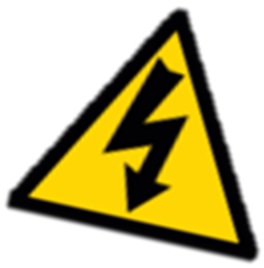The analysis of risk is always an important step when placing products or machines on the market. The task of trying to foresee any potential problems associated with the equipment and then implementing risk reduction measures is a crucial way to ensure that the products are safe to use. The need to design a safe product is already embedded into most people’s mind sets, however from experience, it is not always the case that every risk and associated risk reduction measure is adequately documented.
 This scenario recently came to light during a visit to a manufacturer of wood-working machines, who were confident that their machines were safe, however their risk assessment was very light on risks that could have been associated with their equipment. For example, it did not document how they were confident that there was no potential risk of electric shock. The Technical Director of the company explained that they used a qualified electrician, who designed and built the machines in accordance with a standard, which gave them the confidence that the machines were safe. The electrically safety of their machines was not being challenged during this visit but, as none of their risk reduction measures had been documented, it did raise a question as to whether they could provide sufficient evidence to an enforcement authority if the electrical safety of their machines was raised 9 years later. Given that no one could remember which standard had been used, it was clear that they should improve their risk assessments.
This scenario recently came to light during a visit to a manufacturer of wood-working machines, who were confident that their machines were safe, however their risk assessment was very light on risks that could have been associated with their equipment. For example, it did not document how they were confident that there was no potential risk of electric shock. The Technical Director of the company explained that they used a qualified electrician, who designed and built the machines in accordance with a standard, which gave them the confidence that the machines were safe. The electrically safety of their machines was not being challenged during this visit but, as none of their risk reduction measures had been documented, it did raise a question as to whether they could provide sufficient evidence to an enforcement authority if the electrical safety of their machines was raised 9 years later. Given that no one could remember which standard had been used, it was clear that they should improve their risk assessments.
It has been a clear requirement for machines cover by CE marking that a risk assessment should be undertaken and form part of the technical documentation that a manufacturer must hold. However, whilst it is a clear requirement under the Machinery Directive, it is not quite as clear under some of the other CE marking Directives. The Low Voltage Directive, as an example, does not make any reference to risks assessments being undertaken on electrical equipment, however this will soon change.
In 2016, when the new CE marking Directives come into force, the technical documentation requirements under these new Directives will be changed to match the text of the New Legislative Framework and therefore will include the requirement for manufacturers to ensure that they have undertaken an adequate analysis and assessment of the risks associated with their products. The new CE Marking Directives will largely involve just an administrative change, with Declarations of Conformity being required to be updated, however the process of CE marking an electrical appliance will also change to include a risk assessment. The risk assessments does not need to be complicated and any suitable methods of assessment that can be chosen, as long as it can show that all of the potential risks have been identified and that they have been eliminated or reduced to a suitable level, then it should be perfectly fine.
If you are looking for more guidance on undertaking risk assessments, then please contact the CE Marking Association. Or why not attend our Annual CE Marking Seminar, which includes a presentation on risk assessments under the new 2016 Directives.
Comments are closed.










